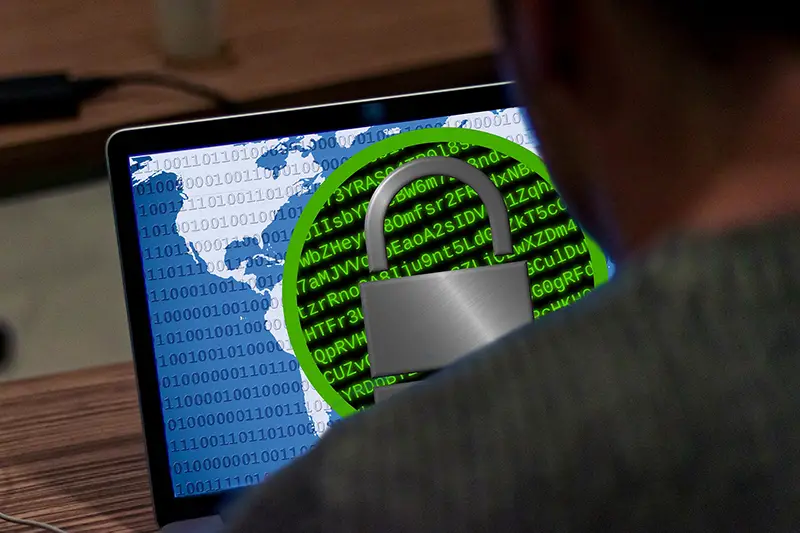Click here to get this post in PDF
1. Enable Windows updates
Windows updates are regular security updates released by Microsoft each month. They are designed to ‘plug’ any security holes in the operating system that hackers and malware can exploit to gain access to your data or even take control of your computer completely. Ensuring you apply these updates to all of your PCs and servers each month will give your business a much-needed security boost and make it much more difficult for threats to infiltrate. This is one of the most important things you can do to make your business more secure and should not be considered an option. If you are not already updating your systems this way please start now! (pretty please)
2. Remove Administrator privileges
When you install Windows on a PC the first user account created is automatically given Administrator level permissions. A lot of businesses go on to use this account as their everyday login to carry out their normal work duties. From a security perspective, unfortunately, this is one of the worst things you can do within your business. The risk comes from the amount of power the administrator account wields. If a hacker or malware is able to infiltrate your PC it typically ‘inherits’ the level of permissions from the user account you are logged on with. This means it will have complete control of your PC and all of your data as it will have administrator-level access. To remove the administrator-level permissions you will typically need to either (a) create another standard user account and use this going forward or (b) create another administrator account and remove your current account from the administrators’ user group.
3. Review your Antivirus software
10 years ago antivirus software was able to stop the majority of threats to your data. Unfortunately, the nature of cyber threats has changed a lot since then and because of this you can no longer rely on antivirus software on its own to protect your data. It still provides an essential layer of protection however so the antivirus protection you decide to install is an important choice. We would recommend you buy a ‘non-free’ version to protect your business as there is a lot of research and development needed to detect the latest internet threats, and this obviously costs money. Therefore a ‘non-free’ version is much more likely to protect you better than a free version. Some non-free versions also come with additional security features such as email and/or website threat protection, adding further security. If you don’t want to purchase antivirus software, at the very least install a free version. There are many of these available now and they are usually easy to install.
Once installed, make sure you schedule the software to update its antivirus database automatically. This means it will be able to detect, and hence, protect you from the latest threats that are out there.
4. Educate yourself and your staff about the serious risks from email attachments
Over the last couple of years the number and seriousness of internet threats delivered by email have increased dramatically. Nowadays malware can be disguised in all types of seemingly innocent documents. They are now being contained in documents such as Microsoft Word and Excel files, as well as PDF documents. As soon as these infected documents are opened malware can install itself and run its potentially disastrous application. The most lethal of these types of threat are Ransomware infections. This type of malware actively searches for your most critical data files, such as PDF documents, Word documents and Excel spreadsheets and encrypts them so you can no longer open or read them. Once all your files have been encrypted a message is displayed asking for a sum of money to get your data back. Newer variants also target Sage files and your PC recovery files (so you can no longer restore your PC). There aren’t any official reports from people who have had their data returned so we would not recommend paying the ransom. This means the only way to get your data back is by restoring it from backups (see section 5 below).
We have first-hand experience of how effective this type of malware is and it can be devastating. In the last three months alone we have dealt with several of these attacks and every time we have had to restore the data from an earlier backup.
So how do you help prevent this type of attack?
- The first thing to do is make sure your staff are made aware of how devastating this type of malware can be and that it can be hidden in common file types attached to emails. Ensure this becomes an item at staff meetings and make sure all staff understand how important this is to the business
- If an email contains an attachment and you suspect it may be malicious but can’t be sure, always err on the side of caution and DO NOT OPEN THE ATTACHMENT. It is getting more difficult these days to tell if an email is legitimate or not but deleting it is infinitely better than losing all of your business’ data!
- Ensure your antivirus software is always up-to-date. It should update its virus database files at least once a day so it can detect the latest viruses. Your antivirus software won’t protect you from all email threats but may detect and stop some of them
5. Take regular backups
If you store data that is essential for your business to run – and let’s face it this is usually most of our data! – you should always (and I mean always!) back it up regularly. If you don’t you really are planning for your business to fail.
Even if you are storing your data on a single PC you can still backup your data regularly using something simple like a USB hard disk and the built-in Windows backup program. Or if you don’t want the risk (or hassle) of storing essential data on a physical object in your office that can easily be lost (or stolen) you could use a cloud backup system. Cloud backup services take regular backups by sending your data up to the cloud where it is stored securely off-site. This means that if you are unfortunate enough to experience a disaster such as a flood, fire or theft your data will still be safe and recoverable.
Also, it’s worth noting that globally, malware is becoming an increasing risk to our data, and most of the time the only way to recover data after a ‘ransomware’ attack is to restore from backups. This makes backups more important than ever.
So, as you have read above there are several simple steps you can take to make your business significantly safer from hackers. If you follow these simple steps it might just be the best thing you can do for your business.
Also read: 4 Types Of Cyber Security And The Role They Play In Protecting A Business
Conclusion:
These steps are just one aspect of a secure and safe IT infrastructure and if you follow these simple steps it might just be the best thing you can do for your business to protect it from hackers – for more information about other aspects take a look at our IT Security page.
About the Author
Andrew Woods specializes in IT infrastructure services and service management. He is currently Technical Director at Synium IT who help organizations operate efficiently and productively with appropriate, secure and reliable IT Systems.



[…] You may also like: 5 Easy Things you can do NOW to make your Business Safer from Hackers […]